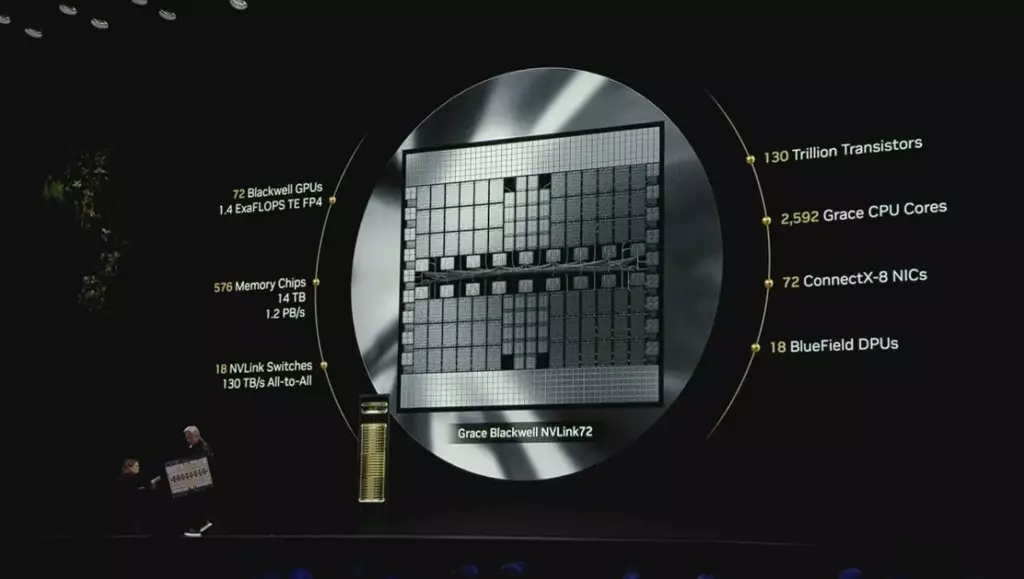In a striking reversal, U.S. President Donald Trump recently announced the exemption of tariffs on various consumer electronics and semiconductors, following persistent pressure from stock market fluctuations and tech industry advocates. This decision, articulated in a document from the U.S. Customs and Border Protection, appears to be a tactical retreat rather than a definitive pivot towards a coherent trade policy. Given that many of these electronics, largely produced in China, were previously ensnared by a staggering 145% tariff along with an additional 10% global levy, the implications of this shift are multifaceted. Trump’s actions seem to align more closely with established economic wisdom, yet they also raise questions about the integrity and consistency of his administration’s trade strategies.
The crux of the issue lies in the fact that the tariffs could have severely disrupted the technological backbone of the modern U.S. economy. With the stock market having witnessed a 15% decline since Trump took office, the stakes for maintaining investor confidence could not be higher. Economic experts had previously warned that consumers might eventually be forced to pay exorbitant prices for essential devices—think a hypothetical $1,000 iPhone ballooning to a staggering $3,500 if produced domestically. While such predictions may have seemed extreme, they highlight a critical point: the U.S. infrastructure cannot currently support the bulk manufacturing of semiconductors that a company like Apple would require.
The Real Cost of Tariffs on Tech Products
The impact of tariffs on consumer electronics is significant and pervasive. The Consumer Technology Association estimates that such trade barriers could inflate the prices of game consoles by 40%, add 26% to smartphone costs, and lead to a whopping 46% increase for laptops. These numbers illustrate a stark reality: tariffs do not exist in a vacuum and understanding their ripple effects is crucial for any informed policy discourse. Yet, while the decision to exempt tech products may provide short-term relief to consumers and businesses alike, it fails to address the broader structural issues that have eroded U.S. competitiveness in this critical sector.
Historically, the U.S. has ceded a significant portion of its semiconductor market share to foreign competition, particularly to firms like Taiwan’s TSMC. Scott Almassy, a partner at PwC, pointed out that simply implementing tariffs will not reclaim this lost market easily. The long-standing decline of the U.S. chip manufacturing sector cannot be reversed overnight; it requires sustained effort, investment, and, fundamentally, a rethinking of manufacturing strategies. Almassy emphasized that the U.S. initiative must begin with bolstering the fundamental raw materials—the commodities and basic materials that form the bedrock of the supply chain.
The Long Road Ahead for Domestic Manufacturing
While the temporary suspension of tariffs provides a reprieve, it does not negate the need for systemic change. President Trump’s commitment to reviving American manufacturing capabilities, particularly in the semiconductor space, faces monumental challenges. With promises of U.S. companies investing billions in domestic production, the premise remains optimistic yet naïve. Duncan Stewart, a research director at Deloitte, noted that even with governmental support through initiatives like the U.S. Chips and Science Act, ramping up domestic production is a slow process. By 2032, the U.S. might only reclaim a fraction of market share, moving from 10% to a modest 14%, a mere drop in the bucket compared to the vastness of the global market.
This slow reclamation underscores an undeniable truth: manufacturing alone is not sufficient to energize the U.S. tech workforce. The prominence of research and development, design innovation, and a deep talent pool must not be overlooked. Although politicians may express concern about the lobbying power of the tech industry, it’s imperative to acknowledge the significance of cultivating high-value jobs that modern economies depend on. The demand for STEM professionals is on the rise, but the U.S. faces a troubling gap in education and workforce preparedness compared to countries like China, which produces a significantly higher number of engineers.
The Illusion of Tariffs as a Quick Fix
While the Trump administration may view tariffs as a necessary means to fortify U.S. competitiveness, their efficacy remains dubious. As a spokesperson indicated, the administration’s focus is on diminishing reliance on Chinese technology production. However, tariffs alone are a simplistic solution to a complex problem that requires comprehensive strategies involving investment in education, innovation, and workforce training.
The U.S. stands at a crossroads, and as it navigates this intricate terrain, it must prioritize building sustainable, competitive advantages in technology, not just through punitive tariffs but through fostering an ecosystem ripe for innovation and high-quality job creation. The issues confronting the U.S. tech industry are far-reaching and require nuanced, long-term strategies that recognize the intricate global supply chain while also advancing the domestic technological landscape.


Leave a Reply